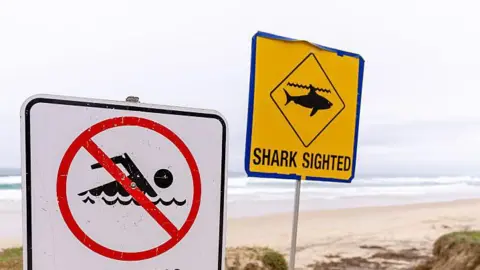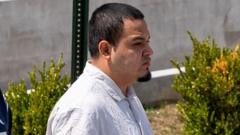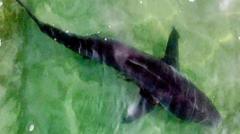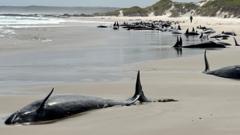Mauricio Hoyos still remembers the pressure that the jaws of a female Galapagos shark, over 3m in length, exerted on his skull.
The animal had lunged at him with astonishing speed, giving him barely enough time to duck his head in a last ditch effort to protect his jugular vein.
When it closed its jaw, I felt the pressure of the bite, and then, after what I think was a second, it opened it again and it let me go, Hoyos told BBC Mundo from his home in Baja California, Mexico, a little over month after surviving the incident.
Hoyos, a marine biologist with over 30 years of experience studying sharks in their natural habitat, was on a research trip in Costa Rica when he was attacked by the shark in September.
Less than two months on, and still bearing the scars from the attack on his face, he describes his recovery as incredible - and says he even hopes to encounter his assailant again.
For Hoyos, what happened to him that day in the waters off Cocos Island is the result of normal animal behaviour when confronted with a perceived threat.
In this case, this bite was like a dog's, he says.
Have you ever seen how dogs, when another dog gets too close, throw a quick bite? It doesn't hurt it, but it calms the other dog down.
Hoyos - who along with his colleagues attaches acoustic tags to sharks to help pinpoint their mating and spawning grounds as part of his work - was alerted to the shark's presence in the water by tourists.
It was at a depth of 40m, and Hoyos told the captain of the boat he was on that he would be there for a maximum of five minutes.
He then entered the water and began his slow descent.
Hoyos recalls encountering the shark: This giant female, measuring between 3 and 3.5m (11.5ft), swam by and headed toward the bottom, and I positioned myself to tag her at the base of her dorsal fin.
But Hoyos, who has tagged many kinds of sharks in his decades-long career, says this animal reacted differently to others.
The tip - the metal tip attached to the cable hanging from the probe - goes in, and unlike the other sharks I've tagged that immediately flee, she turns around and stares at me, he recalls.
Hoyos says he held the shark's gaze as it swam away - but then, suddenly, out of nowhere, it lunged at him.
I lowered my head, and what I felt was its lower jaw digging into my cheek and its upper jaw into my head. I was there, I imagine for a second, no more, inside its jaw, and then it simply opened it again.
The Galapagos shark's 29 serrated teeth not only left Hoyos with deep wounds to his face and head, but also severed the oxygen line of his diving apparatus.
He had survived the shark attack but was still in mortal danger.
In addition, one of the teeth had torn his goggles, and the blood-tinged water was further blurring his already limited visibility.
When I realised that no air was coming out of the hose, I grabbed a second one we have, which we call an octopus, that is used to give air to someone else if they need it, he tells BBC Mundo.
But then I realised that the regulator wasn't working and was blowing air instead of regulating it, so I had to remember my training and start regulating it with my lips.
Bleeding, blinded, and with the air escaping, Hoyos calculated that he had less than a minute to reach the surface.
Since I couldn't see anything, what I did was look for the light that I knew was the surface. I started swimming upwards, in a very coordinated manner, because I wanted to avoid erratic movements that would attract the shark.
After Hoyos reached the surface, a young man pulled him aboard the boat, and when the captain saw his condition, he called the park ranger station to report the incident.
Hoyos explained that he didn't feel the pain of his injuries until much later.
Obviously, I had adrenaline in my system, but the bite didn't hurt that much. What hurt the most was the impact: when the shark bit me - an animal 3m long and at that speed - it was like being hit by a car. In fact, I ended up with a huge bruise all over my jaw; I thought it was broken.
When they docked, a team of paramedics was ready to provide him with emergency care.
Hoyos was lucky: as well as surviving the attack and the subsequent ascent, none of his wounds became infected, and the healing process took less time than anyone could have imagined.
The doctors told me it was amazing: the attack happened on 27 [September], I had a 34-hour trip, they performed a surgical debridement [removing damaged tissue], and two days later they were already evaluating whether they could perform reconstructive surgery.
Smiling broadly, Hoyos adds that he is already planning to get back into the water and has a diving trip booked for 14 November.
And he says that after having survived an attack of this magnitude he has even more respect for the animals he studies.
This is the proof that this female spared my life; I can't put it any other way. And this will allow me to continue speaking well of sharks and advocating for their conservation in the future.


















